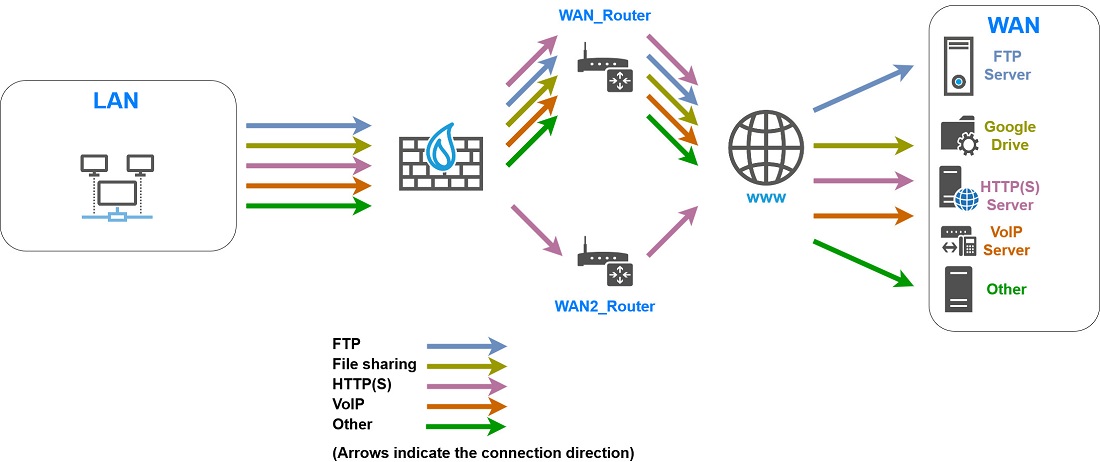Application: limiting and reserving bandwidth in a LAN/WAN/WAN2 architecture
For this example, it is assumed that the user already has the lowest configuration required to apply QoS in a LAN/WAN/WAN2 architecture.
This example also explains how to add the components needed in order to apply bandwidth limitation or reservation to some traffic passing through the links attached to the LAN, WAN and WAN2 interfaces.
In this example, HTTP/HTTPS traffic is balanced between the WAN and WAN2 access links through policy-based routing (PBR) which relies on a router object with load balancing.
Details of the traffic management policy set up by the administrator are shown below.

Limiting and reserving bandwidth over the WAN link
NOTE
The sum of all bandwidth reserved for a link must not exceed 85% of the link's total bandwidth. This is because the usable bandwidth for such reservations is equal to the bandwidth assigned to the corresponding traffic shaper (90% of total bandwidth) minus the bandwidth assigned to the acknowledgment queue (5% of total bandwidth).
Transferring work files (FTP)
Set a queue named FTP_WAN_Q:
- Reservation of 10 Mbit/s and limitation to 20 Mbit/s for outgoing traffic,
- Reservation of 10 Mbit/s and limitation to 20 Mbit/s for return traffic.
Sharing files over an external server (e.g., Google Drive)
Set a queue named GD_WAN_Q:
- Reservation of 10 Mbit/s and no limitation for outgoing traffic,
- Reservation of 10 Mbit/s and limitation to 20 Mbit/s for return traffic.
VoIP communications and videoconferencing traffic
Set a queue named SIP_WAN_Q:
- Reservation of 15 Mbit/s and no limitation for outgoing traffic,
- Reservation of 15 Mbit/s and no limitation for outgoing traffic.
Limiting and reserving bandwidth over the WAN and WAN2 links
Transferring HTTP/HTTPS files to and from the external work server
Set a queue named HTTP_WAN_Q:
- Reservation of 40 Mbit/s and no limitation for outgoing traffic,
- Reservation of 40 Mbit/s and no limitation for outgoing traffic.